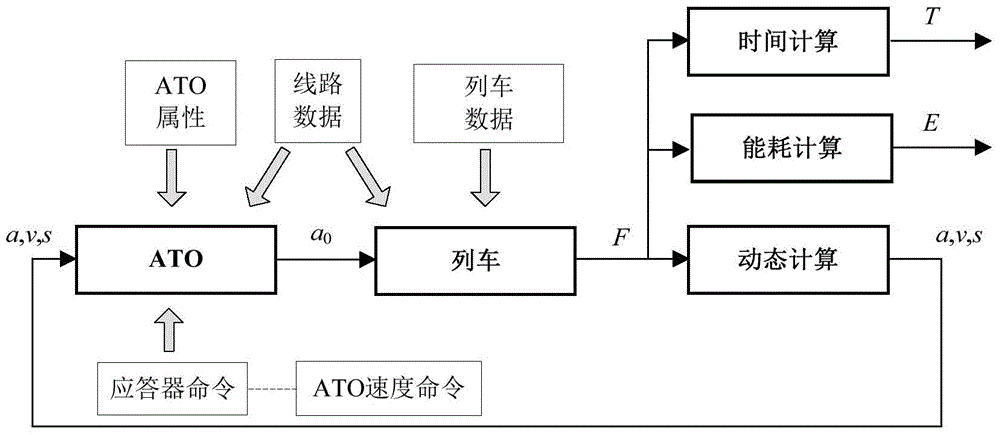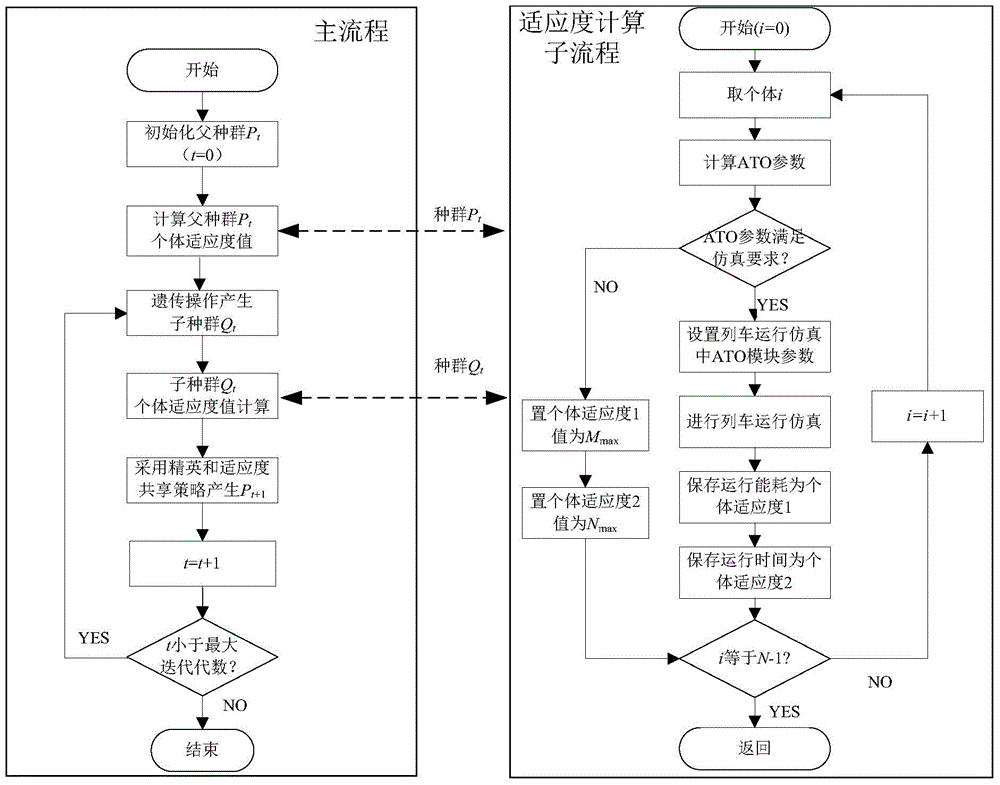ATO (Automatic Train Operation) speed command optimization method of urban rail transit train
A technology for urban rail transit and speed command, which is applied in the fields of instrumentation, calculation, electrical digital data processing, etc. It can solve the problem of inability to accurately calculate the energy consumption of train running, and achieve the effect of low cost, good flexibility and guarantee of service quality.
- Summary
- Abstract
- Description
- Claims
- Application Information
AI Technical Summary
Problems solved by technology
Method used
Image
Examples
Embodiment 1
[0044] Taking a section of a line in urban rail transit as an example, the design steps of the energy-saving ATO speed command are as follows:
[0045] First, input the ATO attribute data, line data and train attribute data, determine the simulation interval, if the data is correct, the computer enters the energy-saving ATO speed command design module;
[0046] Secondly, enter the energy-saving ATO speed command design module, the specific steps include:
[0047] Step 1: Coding, that is, coding each population. Real number encoding is adopted, and the encoding object is ATO speed command, including ATO control mode (Mode), traction acceleration (ap), braking deceleration (ab), coasting start speed (vcs), coasting end speed (cruise speed) (vce) and idle point position (sc), the constraints are:
[0048] Mode=M i +p M i ,p=0,1,2
[0049] a p =a pl +m·Δa p m=0,1,2,...,M
[0050] a b =a bl +n·Δa b n=0,1,2,...,N
[0051] v cs =v csl +k·Δv cs k=0,1,2,...,K
[0052]...
PUM
 Login to View More
Login to View More Abstract
Description
Claims
Application Information
 Login to View More
Login to View More - R&D
- Intellectual Property
- Life Sciences
- Materials
- Tech Scout
- Unparalleled Data Quality
- Higher Quality Content
- 60% Fewer Hallucinations
Browse by: Latest US Patents, China's latest patents, Technical Efficacy Thesaurus, Application Domain, Technology Topic, Popular Technical Reports.
© 2025 PatSnap. All rights reserved.Legal|Privacy policy|Modern Slavery Act Transparency Statement|Sitemap|About US| Contact US: help@patsnap.com



